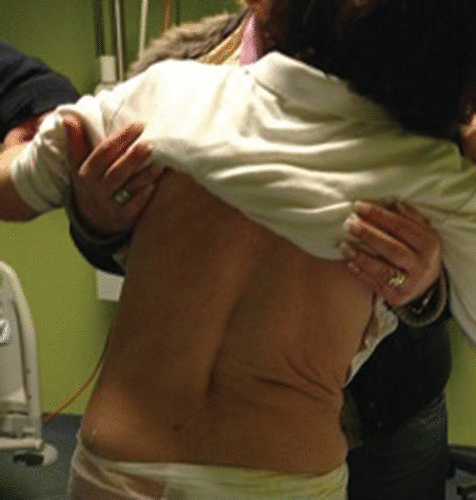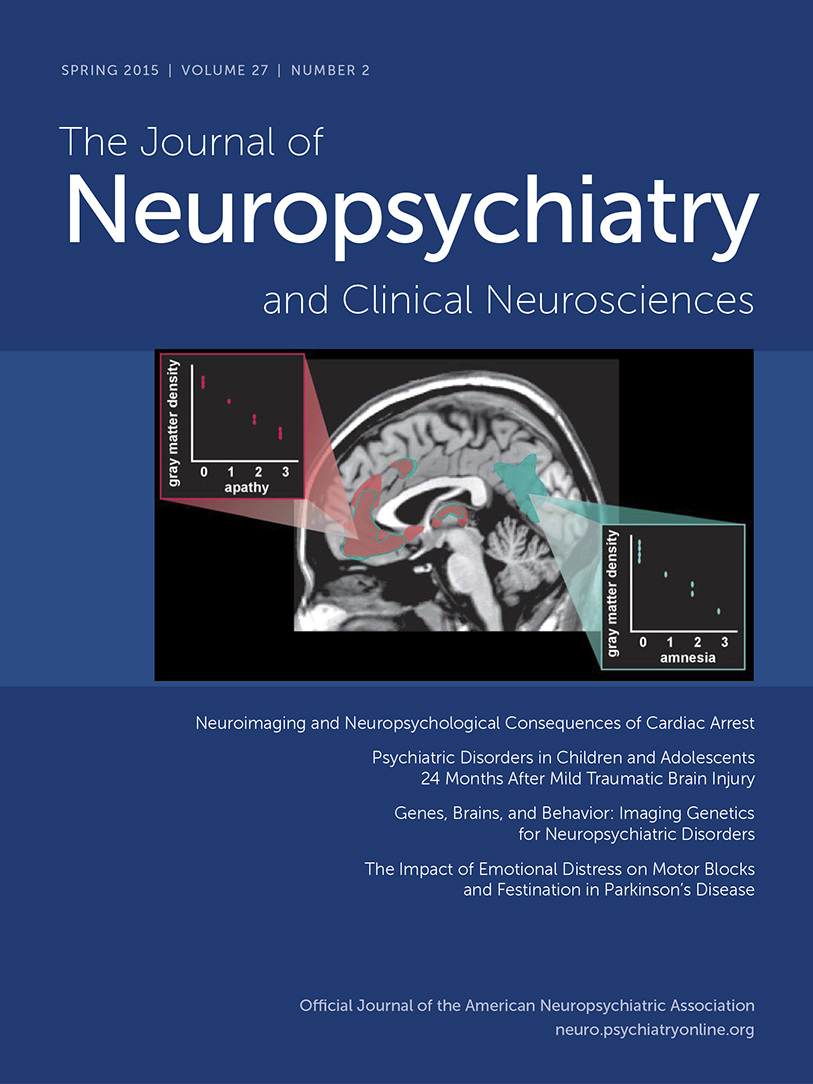Acute Pisa Syndrome as a Neurological Emergency
To the Editor: Pisa syndrome is a rare clinical entity usually associated with underlying neurodegenerative diseases such as Parkinson's disease and multiple system atrophy. However, it can also occur as an adverse effect of treatment with antipsychotics, especially in patients with predefined risk factors.
Pisa syndrome is defined as sustained lateral flexion of the trunk. When observed in practice, it denotes an incapacitating symptom of underlying neurodegenerative diseases such as Parkinson’s disease and multiple system atrophy.1,2 Pisa syndrome can also occur as an adverse effect of prolonged treatment with antipsychotics, especially typical agents. However, reports describing acute drug-induced Pisa syndrome with possible treatment modalities are lacking. Here we report a patient with Alzheimer’s disease with severe risperidone-induced acute Pisa syndrome in the neurological emergency room, who was successfully treated with low-dose quetiapine.
Case Report
A 67-year-old woman, with a 10-year history of Alzheimer’s disease and a positive family history for dementia, was examined in the emergency unit in January 2013 because of the acute onset of truncal leaning toward the right. The patient could not maintain upright posture and was bedridden (Figure 1). Initial examination findings revealed no additional signs of extrapyramidal, pyramidal, and cerebellar dysfunction. Medication on hospital admission consisted of risperidone 1 mg/day and oxazepam 15 mg/day. Her symptoms had started 3 days earlier, after discharge from the psychiatric clinic, where risperidone was introduced. Laboratory findings such as CBC, CRP, liver function enzymes, electrolyte panel, and coagulation profile were within the normal range. Results on brain CT scans revealed brain atrophy without acute pathological substrate. High suspicion of drug-induced acute dystonic reaction was made. Risperidone was immediately discontinued, and adjunctive treatment with quetiapine 25 mg/day was initiated. Two weeks later, the patient was re-examined in the outpatient clinic. Mild truncal lateral flexion was still present, but the patient was able to maintain posture and could walk unaided.

FIGURE 1. Dystonic Truncal Posturing Toward the Righta
aThe patient cannot maintain upright posture and would fall if unaided.
Discussion
Pisa syndrome is a rare clinical entity with possible serious consequences. In a multicenter drug safety surveillance project, Pisa syndrome was documented in only 17 of 45,000 psychiatric patients, and several putative risk factors were identified, including a history of previous exposure to antipsychotic drugs, female gender, old age, and organic brain disease.3 Keeping in mind the risk factors for development of Pisa syndrome, it seems that patients with underlying cholinergic deficiency (e.g., Alzheimer’s disease) are highly sensitive to the introduction of antipsychotics with a high affinity for dopamine 2 (D2) receptors even if applied in minimal doses, as in our patient. This finding supports the hypothesis of the crucial role of dopaminergic-cholinergic imbalance in the pathophysiology of Pisa syndrome.4
Treatment options for Pisa syndrome are empirical and include administration of anticholinergics, agonists of GABAB receptors, benzodiazepines, botulinum toxin application, and discontinuation of the provoking agent.5 We decided not to use anticholinergics because of the underlying Alzheimer’s disease in our patient. Instead, the atypical antipsychotic quetiapine with low antagonism for D2 receptors was administered in a low dose, resulting in significant clinical improvement.
In conclusion, antipsychotics blocking D2 receptors can induce a serious adverse effect in patients with predefined risk factors. Administration of antipsychotics with low D2 receptor affinity represents a rational treatment option in such patients. Although Pisa syndrome is not a life-threatening condition and is rarely seen in the emergency unit, clinicians should be familiar with its phenomenology and etiology because early recognition and appropriate management can prevent a chronic irreversible state.
1 : Pisa syndrome in Parkinson’s disease: clinical, electromyographic, and radiological characterization. Mov Disord 2012; 27:227–235Crossref, Medline, Google Scholar
2 : Pisa syndrome in a patient with multiple system atrophy. Mov Disord 1998; 13:607–609Crossref, Medline, Google Scholar
3 : Pisa syndrome (pleurothotonus): report of a multicenter drug safety surveillance project. J Clin Psychiatry 2000; 61:569–574Crossref, Medline, Google Scholar
4 : Drug-induced Pisa syndrome (pleurothotonus): epidemiology and management. CNS Drugs 2002; 16:165–174Crossref, Medline, Google Scholar
5 : Cholinergic-dopaminergic imbalance in Pisa syndrome. Clin Neuropharmacol 2003; 26:119–121Crossref, Medline, Google Scholar



